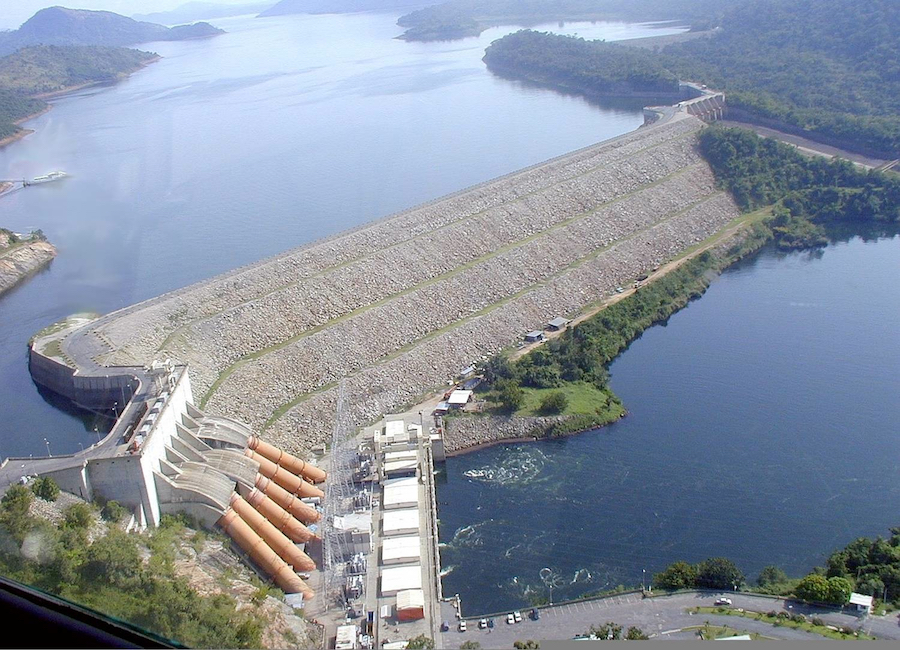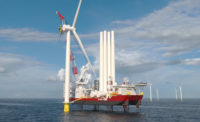Washington-based project developer Zoetic Global has signed a 20-year power-purchase agreement with Ghana’s power distributor, Electricity Co. of Ghana, for a new project to generate 100 MW of renewable power by harnessing the kinetic energy of the Akosombo Dam’s flowing waters.
The technology is new in Africa and uses hydrokinetic technology based on turbines with spiral-shaped blades for converting flowing water into energy.
The company has partnered with two other U.S. companies—Natural Power Concepts (NPC) and JWF Industrial—and India’s International Coil Ltd. for the design, manufacturing and deployment of turbines at the tailrace of Ghana’s Akosombo Dam. The turbines will use NPC’s so-called in-stream auger turbine (IAT) technology, which features a turbine that is tethered to the shore and connected via a marine cable to a substation adjacent to the dam.
“The IAT technology was originally designed for run-of-river, shallow, fast-moving water, and Zoetic views existing hydro dams as the most compelling and impactful because [the technology] could utilize [that] existing infrastructure,” Zoetic said in an emailed response to ENR.
Further, the existing dams have the advantage of having minimal or no societal and environmental impacts because “they have already occurred,” Zoetic added.
“Grid connection, site security, maintenance buildings and access roads are all in place,” according to Zoetic.
Using an internal or external generator, the turbines can generate electricity at low-water flow rates. The turbines, which can be deployed together to create a floating powerplant, can function well when partially or fully submerged, NPC notes on its website.
Akosombo Dam is a 660-meter-long, 114-m-high, rockfill-embankment structure. The dam has created a reservoir, 400-kilometer-long Lake Volta, which has a capacity of 148 cu km and a surface area of 8,502 sq km. With two spillways, the Akosombo has the capacity to discharge 34,000 cu m per second.
Manufacture of the IATs for Zoetic’s project is expected to be completed in 2016, at a date to be confirmed, according to NPC.
In a Jan. 14 statement, Zoetic CEO Jerome Ringo said the $225-million project is driven, partly, by the Power Africa initiative and the Paris Climate Pact, which “provides immense opportunities for renewable-energy promoters to deliver real impact to the developing world.”
The Ghana project is being financed by “development capital from U.S. investors,” according to Zoetic.
“Zoetic is in discussions with private equity firms, venture firms and other financing entities,” the company said, leaving the companies unnamed.
Hydrokinetic energy projects face many obstacles: high initial installation costs as well as conditions that can hamper the operation and maintenance of the equipment. Nonetheless, NPC claims IAT technology is suitable for developing countries in which hydropower projects take too long to complete and require extensive site construction involving heavy environmental impacts.
Ghana, which is one of the six countries benefitting from the U.S. government’s Power Africa initiative, has an installed capacity of 2450 MW, although only 2000 MW is actually available for consumption. At least 546 MW is generated by independent power producers.
Ghana gets 56% of its energy from hydro sources, while the rest comes from thermal. An estimated 72% and 52% of the country’s urban and rural population, respectively, have access to electricity.



Post a comment to this article
Report Abusive Comment